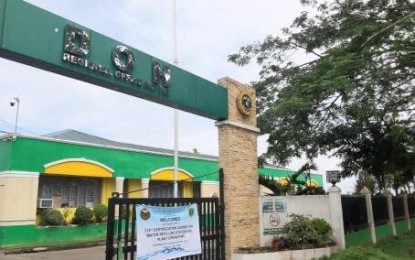
NEW INFECTIONS. The Department of Health (DOH) Eastern Visayas regional office in Palo, Leyte. The DOH said on Thursday (Dec 3, 2020) that there are 99 new cases of HIV/AIDS (human immunodeficiency virus and acquired immune deficiency syndrome) in the region detected from January to September this year. (PNA file photo)
TACLOBAN CITY – Eastern Visayas has 99 new cases of HIV/AIDS (human immunodeficiency virus and acquired immune deficiency syndrome) detected from January to September this year, the Department of Health (DOH) said on Thursday.
Of the new infections, 47 were reported in Leyte, 16 each in Northern Samar and Samar, nine in Southern Leyte, seven in Eastern Samar, and four in Biliran.
DOH Eastern Visayas information officer John Paul Roca said the number is 36.5 percent lower compared to the 156 cases recorded in the same period last year.
"There is no significant increase in cases due to the coronavirus disease pandemic. The clients are reluctant to access HIV/AIDs services in fear of going out," he said in a phone interview.
This sums up the total confirmed HIV cases in the region to 1,129 recorded since 1989, with 62 deaths, according to the health department.
Among the region's six provinces, 588 cases were reported in Leyte, 170 in Samar, 115 in Southern Leyte, 112 in Northern Samar, 89 in Eastern Samar, and 55 in Biliran.
At least 92 percent of the cases are male, while the most affected age group at 82 percent is 15-34.
The DOH said the practice of unsafe sex and those with risky sex behaviors – having male-to-male sexual contact and with multiple partners – are among the reasons for infection in the region.
At present, the DOH has 11 treatment hubs located in strategic locations throughout the region that offer services to detect and treat infected persons.
These are the Eastern Visayas Regional Medical Center and Divine Word Hospital both in Tacloban City, the six provincial hospitals in the region, Hilongos District Hospital in Leyte, St. Camillus Hospital in Catbalogan, Samar, and the Ormoc City health office.
To date, only 555 people diagnosed with HIV and AIDS in the region are enrolled in the DOH’s anti-retroviral treatment that helps infected individuals live longer and reduce the risk of transmission.
The DOH targets that by 2022, some 90 percent of all persons with HIV would be aware of their health status and would be taking medications.
HIV is a virus that attacks the immune system. If untreated, a person’s immune system will eventually be destroyed, according to Avert, an organization based in the United Kingdom.
AIDS, on the other hand, refers to a set of symptoms and illnesses that occur at the very final stage of HIV infection. (PNA)
